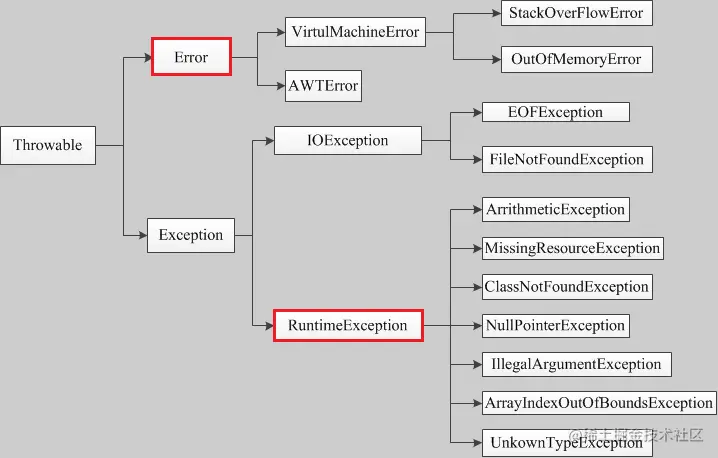1
2
3
4
5
6
7
8
9
10
11
12
13
14
15
16
17
18
19
20
21
22
23
24
25
26
27
28
29
30
31
32
33
34
35
36
37
38
39
40
41
42
43
44
45
46
47
48
49
50
51
52
53
54
55
56
57
58
59
60
61
62
63
64
65
66
67
68
69
70
71
72
73
74
75
76
77
78
79
80
81
82
83
84
85
86
87
88
89
90
91
92
93
94
95
96
97
98
99
100
101
102
103
104
105
106
107
108
109
110
111
112
113
114
115
116
117
118
119
120
121
122
123
124
125
126
127
128
129
130
131
132
133
134
135
136
137
138
139
140
141
142
143
144
145
146
147
148
149
150
151
152
153
154
155
156
157
158
159
160
161
162
163
164
165
166
167
168
169
170
171
172
173
174
175
176
177
178
179
180
181
182
183
184
185
186
187
188
189
190
191
192
193
194
195
196
197
198
199
200
201
202
203
204
205
206
207
208
209
210
211
212
213
214
215
216
217
218
219
220
221
222
223
224
225
226
227
228
229
230
231
232
233
234
235
236
237
238
239
240
241
242
243
244
245
246
247
248
249
250
251
252
253
254
255
256
257
258
259
260
261
262
263
264
265
266
267
268
269
270
271
272
273
274
275
276
277
278
279
280
281
282
283
284
285
286
287
288
289
290
291
292
293
294
295
296
297
298
299
300
301
302
303
304
305
306
307
308
309
310
311
312
313
314
315
| public enum ResponseCodeEnum implements ResponseCodeInterface {
SUCCESS(0, "Success", "COMMON.SUCCESS"),
PENDING(1, "In-progress", "COMMON.PENDING"),
FAILED(99999, "Failed", "COMMON.FAILED");
private final int code;
private final String message;
private final String i18nKey;
ResponseCodeEnum(int code, String message, String i18nKey) {
this.code = code;
this.message = message;
this.i18nKey = i18nKey;
}
@Override
public int code() {
return this.code;
}
@Override
public String message() {
return this.message;
}
@Override
public String i18nKey() {
return this.i18nKey;
}
public enum Business implements ResponseCodeInterface {
COMMON_OBJECT_NOT_FOUND(10001, "找不到ID为 {} 的 {}", "Business.OBJECT_NOT_FOUND"),
COMMON_UNSUPPORTED_OPERATION(10002, "不支持的操作", "Business.UNSUPPORTED_OPERATION"),
COMMON_FILE_NOT_ALLOWED_TO_DOWNLOAD(10003, "文件名称({})非法,不允许下载", "Business.FILE_NOT_ALLOWED_TO_DOWNLOAD"),
PERMISSION_FORBIDDEN_TO_MODIFY_ADMIN(10101, "不允许修改管理员的信息", "Business.FORBIDDEN_TO_MODIFY_ADMIN"),
PERMISSION_NOT_ALLOWED_TO_OPERATE(10202, "没有权限进行此操作,请联系管理员", "Business.NO_PERMISSION_TO_OPERATE"),
LOGIN_WRONG_USER_PASSWORD(10201, "用户密码错误,请重新输入", "Business.LOGIN_WRONG_USER_PASSWORD"),
LOGIN_ERROR(10202, "登录失败:{}", "Business.LOGIN_ERROR"),
LOGIN_CAPTCHA_CODE_WRONG(10203, "验证码错误", "Business.LOGIN_CAPTCHA_CODE_WRONG"),
LOGIN_CAPTCHA_CODE_EXPIRE(10204, "验证码过期", "Business.LOGIN_CAPTCHA_CODE_EXPIRE"),
LOGIN_CAPTCHA_CODE_NULL(10205, "验证码为空", "Business.LOGIN_CAPTCHA_CODE_NULL"),
UPLOAD_FILE_TYPE_NOT_ALLOWED(10401, "不允许上传的文件类型,仅允许:{}", "Business.UPLOAD_FILE_TYPE_NOT_ALLOWED"),
UPLOAD_FILE_NAME_EXCEED_MAX_LENGTH(10402, "文件名长度超过:{} ", "Business.UPLOAD_FILE_NAME_EXCEED_MAX_LENGTH"),
UPLOAD_FILE_SIZE_EXCEED_MAX_SIZE(10403, "文件名大小超过:{} MB", "Business.UPLOAD_FILE_SIZE_EXCEED_MAX_SIZE"),
UPLOAD_IMPORT_EXCEL_FAILED(10404, "导入excel失败:{}", "Business.UPLOAD_IMPORT_EXCEL_FAILED"),
UPLOAD_FILE_IS_EMPTY(10405, "上传文件为空", "Business.UPLOAD_FILE_IS_EMPTY"),
UPLOAD_FILE_FAILED(10406, "上传文件失败:{}", "Business.UPLOAD_FILE_FAILED"),
USER_NON_EXIST(10501, "登录用户:{} 不存在", "Business.USER_NON_EXIST"),
;
private final int code;
private final String message;
private final String i18nKey;
Business(int code, String message, String i18nKey) {
Assert.isTrue(code > 10000 && code < 99999,
"错误码code值定义失败,Business错误码code值范围在10000~99099之间,请查看ErrorCode.Business类,当前错误码码为" + name());
String errorTypeName = this.getClass().getSimpleName();
Assert.isTrue(i18nKey != null && i18nKey.startsWith(errorTypeName),
String.format("错误码i18nKey值定义失败,%s错误码i18nKey值必须以%s开头,当前错误码为%s", errorTypeName, errorTypeName, name()));
this.code = code;
this.message = message;
this.i18nKey = i18nKey;
}
@Override
public int code() {
return this.code;
}
@Override
public String message() {
return this.message;
}
@Override
public String i18nKey() {
return i18nKey;
}
}
public enum External implements ResponseCodeInterface {
FAIL_TO_PAY_ON_ALIPAY(1001, "支付宝调用失败", "External.FAIL_TO_PAY_ON_ALIPAY");
private final int code;
private final String message;
private final String i18nKey;
External(int code, String message, String i18nKey) {
Assert.isTrue(code > 1000 && code < 9999,
"错误码code值定义失败,External错误码code值范围在1000~9999之间,请查看ErrorCode.External类,当前错误码码为" + name());
String errorTypeName = this.getClass().getSimpleName();
Assert.isTrue(i18nKey != null && i18nKey.startsWith(errorTypeName),
String.format("错误码i18nKey值定义失败,%s错误码i18nKey值必须以%s开头,当前错误码为%s", errorTypeName, errorTypeName, name()));
this.code = code;
this.message = message;
this.i18nKey = i18nKey;
}
@Override
public int code() {
return this.code;
}
@Override
public String message() {
return this.message;
}
@Override
public String i18nKey() {
return this.i18nKey;
}
}
public enum Client implements ResponseCodeInterface {
COMMON_FORBIDDEN_TO_CALL(101, "禁止调用", "Client.COMMON_FORBIDDEN_TO_CALL"),
COMMON_REQUEST_TOO_OFTEN(102, "调用太过频繁", "Client.COMMON_REQUEST_TOO_OFTEN"),
COMMON_REQUEST_PARAMETERS_INVALID(103, "请求参数异常,{0}", "Client.COMMON_REQUEST_PARAMETERS_INVALID"),
COMMON_REQUEST_METHOD_INVALID(104, "请求方式: {} 不支持", "Client.COMMON_REQUEST_METHOD_INVALID"),
COMMON_HTTP_MEDIA_TYPE_NOT_SUPPORTED_ERROR(109, "请求类型:{} 不支持", "Client.COMMON_HTTP_MEDIA_TYPE_NOT_SUPPORTED_ERROR"),
COMMON_REQUEST_RESUBMIT(105, "请求重复提交", "Client.COMMON_REQUEST_RESUBMIT"),
COMMON_NO_AUTHORIZATION(106, "请求接口:{} 失败,用户未授权", "Client.COMMON_NO_AUTHORIZATION"),
INVALID_TOKEN(107, "token异常", "Client.INVALID_TOKEN"),
TOKEN_PROCESS_FAILED(108, "token处理失败:{}", "Client.TOKEN_PROCESS_FAILED"),
;
private final int code;
private final String message;
private final String i18nKey;
Client(int code, String message, String i18nKey) {
Assert.isTrue(code > 100 && code < 999,
"错误码code值定义失败,Client错误码code值范围在100~999之间,请查看ErrorCode.Client类,当前错误码码为" + name());
String errorTypeName = this.getClass().getSimpleName();
Assert.isTrue(i18nKey != null && i18nKey.startsWith(errorTypeName),
String.format("错误码i18nKey值定义失败,%s错误码i18nKey值必须以%s开头,当前错误码为%s", errorTypeName, errorTypeName, name()));
this.code = code;
this.message = message;
this.i18nKey = i18nKey;
}
@Override
public int code() {
return this.code;
}
@Override
public String message() {
return this.message;
}
@Override
public String i18nKey() {
return this.i18nKey;
}
}
public enum Internal implements ResponseCodeInterface {
INVALID_PARAMETER(1, "参数异常:{}", "Internal.INVALID_PARAMETER"),
INTERNAL_ERROR(2, "系统内部错误:{}", "Internal.INTERNAL_ERROR"),
GET_ENUM_FAILED(3, "获取枚举类型失败, 枚举类:{}", "Internal.GET_ENUM_FAILED"),
GET_CACHE_FAILED(4, "获取缓存失败", "Internal.GET_CACHE_FAILED"),
DB_INTERNAL_ERROR(5, "数据库异常", "Internal.DB_INTERNAL_ERROR"),
LOGIN_CAPTCHA_GENERATE_FAIL(7, "验证码生成失败", "Internal.LOGIN_CAPTCHA_GENERATE_FAIL"),
EXCEL_PROCESS_ERROR(8, "excel处理失败:{}", "Internal.EXCEL_PROCESS_ERROR"),
;
private final int code;
private final String message;
private final String i18nKey;
Internal(int code, String message, String i18nKey) {
Assert.isTrue(code < 100,
"错误码code值定义失败,Internal错误码code值范围在100~999之间,请查看ErrorCode.Internal类,当前错误码码为" + name());
String errorTypeName = this.getClass().getSimpleName();
Assert.isTrue(i18nKey != null && i18nKey.startsWith(errorTypeName),
String.format("错误码i18nKey值定义失败,%s错误码i18nKey值必须以%s开头,当前错误码为%s", errorTypeName, errorTypeName, name()));
this.code = code;
this.message = message;
this.i18nKey = i18nKey;
}
@Override
public int code() {
return this.code;
}
@Override
public String message() {
return this.message;
}
@Override
public String i18nKey() {
return this.i18nKey;
}
}
}
|


